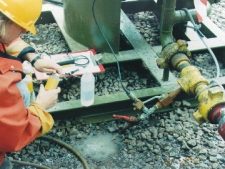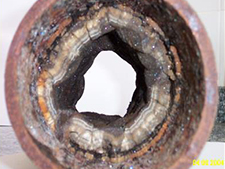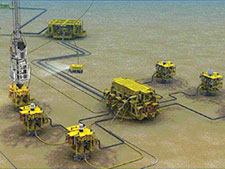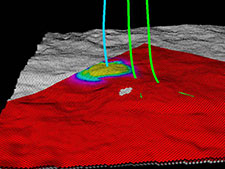Benefits
- Can be used to identify casing leaks.
- Aids water shut-off decisions and helps monitoring of the effects of those decisions.
- Aids monitoring of the effects of perforation decisions.
- Aids monitoring of the scale risk from commingled flow and associated scale mitigation planning.
Background
Produced waters and different formation waters associated with a well (e.g. from different production zones) can have very different compositions when compared with each other. Where this is the case, if a water sample of unknown origin is obtained from the well it is often possible to determine whether the water is:
- One of these formation waters or produced waters.
- A mixture of these waters.
- Unrelated to these waters.
This information can help determine from where the water has been produced. Also, if the produced water is found to be a mixture of different waters, it may be possible to determine how much of each type of water is being produced from the different sources. This information can be very useful for well, scale and reservoir management. For example:
- It may be possible to determine whether produced water is from one or more perforated zones or from a casing leak.
- Where decisions are made to re-perforate a well or shut-off a water-producing zone, subsequent produced water samples may indicate how successful these well operations have been.
- Knowing how much water is being produced over time from individual producing zones can be used to constrain the reservoir model.
- The information can be used to confirm the scaling risk resulting from commingled water production and it can be used in scale mitigation planning (e.g. squeeze job design).
- When combined with multi-rate test data (Tjomsland et al. 2012; see recent publications), it is possible to obtain PLT-type data for each producing zone (i.e. the fraction of total water flow being produced, pressure, productivity index, oil and water rates, and water cut). This information can reduce the need for undertaking PLTs, aids squeeze treatment design, and is beneficial for predicting formation damage from cross-flow.
We can evaluate produced water and formation water composition data for your field to identify the source(s) of the water. We can also undertake the calculations to determine how much water is being produced from these sources. Although, ideally, formation water and produced water compositions for the production zones should be known, sometimes these can be estimated from available data and the source of water might also be inferred from other well/field information.
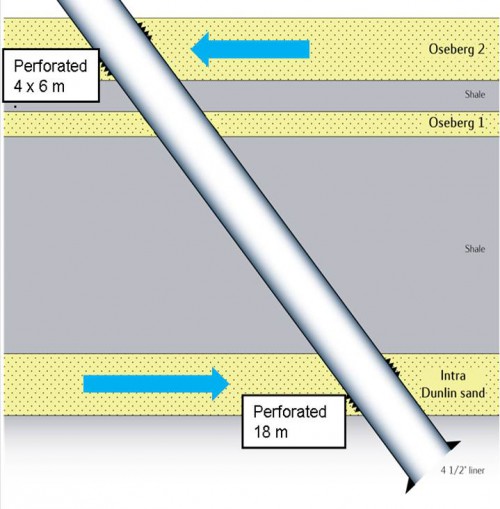
Water allocation in action – what are the water rates from each producing zone?


